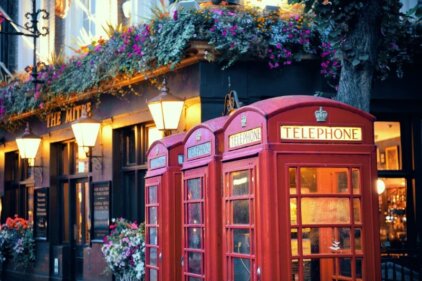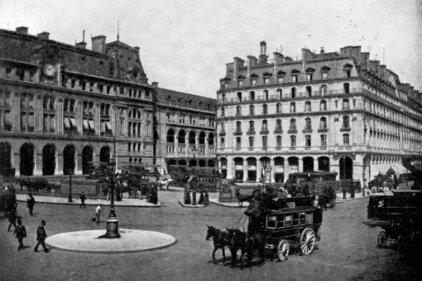What are Green Roofs and Their Environmental Benefits?
Green roofs, simply put, are rooftop gardens that incorporate a layer of vegetation atop a building’s structure. These innovative systems not only enhance the visual appeal of urban landscapes but also offer a myriad of environmental benefits that are crucial for the well-being of our cities.
- Improved Energy Efficiency: Green roofs act as natural insulation, reducing the energy required for heating and cooling buildings, ultimately leading to lower carbon emissions and reduced utility costs.
- Stormwater Management: The vegetation and soil on green roofs absorb and retain rainwater, mitigating the risk of flooding and reducing the burden on urban drainage systems.
- Air Quality Enhancement: Plants on green roofs actively filter and purify the air, removing harmful pollutants and providing cleaner, healthier breathing environments for city dwellers.
- Biodiversity Promotion: Green roofs create new habitats for a diverse range of flora and fauna, including pollinators and other wildlife, contributing to the overall ecological balance of the urban ecosystem.
- Urban Heat Island Mitigation: The cooling effects of green roofs help to counteract the urban heat island effect, a phenomenon where cities experience higher temperatures compared to their surrounding areas.
The History of Green Roofs in London
The concept of green roofs is not entirely new to London; in fact, the city has a rich history of incorporating this sustainable approach to urban design. As early as the 1970s, pioneering architects and urban planners began exploring the potential of green roofs, recognizing their ability to address the environmental challenges faced by the city.
One of the earliest and most notable examples is the Barbican Estate, a residential and arts complex completed in the 1970s. The Barbican’s distinctive terraced gardens, located on the rooftops of its buildings, set a precedent for the integration of green spaces within the urban fabric.
Over the subsequent decades, the green roof movement in London has gained momentum, with an increasing number of public and private organizations embracing this innovative approach to sustainable development.
The Impact of London’s Green Roof Revolution on the Environment
The widespread adoption of green roofs in London has had a profound impact on the city’s environmental landscape. By integrating these living, breathing systems into the urban infrastructure, London has taken significant strides towards mitigating the adverse effects of climate change and creating a more resilient, livable city.
One of the most tangible impacts has been the reduction in energy consumption and greenhouse gas emissions. As green roofs provide natural insulation, buildings equipped with these systems have seen a significant decrease in their heating and cooling demands, leading to lower carbon footprints and more sustainable energy usage.
Additionally, the stormwater management capabilities of green roofs have played a crucial role in addressing the city’s flood risk. By absorbing and retaining rainwater, these systems have alleviated the burden on London’s drainage infrastructure, reducing the likelihood of flooding and the associated environmental and economic damages.
Furthermore, the proliferation of green roofs has contributed to the enhancement of air quality, with the vegetation actively filtering out harmful pollutants and improving the overall respiratory health of city residents.
Success Stories: Notable Green Roof Projects in London
London’s green roof revolution has given rise to numerous success stories, showcasing the transformative power of this sustainable approach to urban design. One particularly noteworthy example is the Queen Elizabeth Olympic Park, which features an extensive network of green roofs that have been integrated into the design of the park’s buildings and infrastructure.
Another shining example is the Bedzed (Beddington Zero Energy Development) project, a pioneering sustainable community in the London borough of Sutton. This development boasts a range of green roof systems, including sedum-covered roofs and vegetable gardens, which not only contribute to the project’s environmental sustainability but also foster a sense of community and urban agriculture.
The City of London Corporation, the local government body responsible for the financial district, has also taken a proactive stance in promoting green roofs. The Corporation’s “Green Roof Code” and financial incentives have encouraged businesses and property owners to incorporate green roof systems into their buildings, leading to a significant increase in the number of these sustainable installations across the city’s commercial landscape.
The Challenges and Obstacles Faced by London’s Green Roof Industry
While London’s green roof revolution has undoubtedly been a resounding success, the industry has not been without its challenges and obstacles. One of the primary hurdles has been the initial cost associated with the installation and maintenance of green roof systems, which can be perceived as a barrier for some property owners and developers.
Additionally, the technical complexities involved in the design and construction of green roofs have required a significant investment in specialized expertise and training. Ensuring the structural integrity of buildings, addressing potential drainage and waterproofing issues, and selecting the appropriate plant species have all posed unique challenges that the industry has had to overcome.
Another obstacle has been the need for greater public awareness and education about the benefits of green roofs. Convincing building owners and the general public of the long-term environmental and economic advantages of these systems has been an ongoing effort, requiring robust communication and outreach initiatives.
The Future of Green Roofs in London and Beyond
As London’s green roof revolution continues to gain momentum, the future of this sustainable approach to urban design looks increasingly promising. With the city’s commitment to ambitious environmental targets, such as the goal of becoming carbon-neutral by 2050, the demand for green roof systems is only expected to grow.
Furthermore, the success stories and best practices established in London have the potential to serve as a blueprint for other cities around the world, inspiring a global green roof movement. By sharing its experiences and lessons learned, London can pave the way for other urban centers to follow suit, creating a network of sustainable cities that collectively address the pressing environmental challenges of our time.
How to Incorporate Green Roofs into Urban Planning and Design
Integrating green roofs into urban planning and design requires a collaborative effort between policymakers, urban planners, architects, and the broader community. Some key strategies for incorporating green roofs into the urban landscape include:
- Policy and Regulatory Frameworks: Establishing clear guidelines, incentives, and regulations that encourage the adoption of green roof systems in new and existing buildings.
- Interdisciplinary Collaboration: Fostering cooperation between various stakeholders, such as urban planners, architects, landscape designers, and ecologists, to ensure a holistic and integrated approach to green roof implementation.
- Public-Private Partnerships: Leveraging public-private partnerships to finance and support the development of green roof projects, particularly in areas where cost may be a barrier.
- Community Engagement: Engaging with local residents and community groups to raise awareness, gather feedback, and foster a sense of ownership and stewardship over green roof initiatives.
- Research and Innovation: Investing in research and development to continually improve the design, performance, and cost-effectiveness of green roof systems, further driving their widespread adoption.
The Economic and Social Advantages of Green Roofs in London
In addition to the environmental benefits, green roofs in London have also demonstrated significant economic and social advantages. From job creation and increased property values to improved mental health and community engagement, these sustainable systems have had a far-reaching impact on the city’s overall well-being.
The green roof industry has become a growing source of employment, with the design, installation, and maintenance of these systems generating a range of job opportunities. This, in turn, has contributed to the local economy and fostered the development of a skilled workforce dedicated to sustainable urban development.
Moreover, studies have shown that buildings with green roofs often command higher property values, as these features are increasingly sought after by discerning buyers and tenants. This economic incentive has further incentivized property owners and developers to embrace the green roof revolution.
On the social front, green roofs have been linked to improved mental health and well-being among city residents. The presence of nature-based elements in the urban landscape has been shown to reduce stress, promote relaxation, and foster a sense of community, contributing to the overall quality of life in London.
Conclusion: London’s Green Roof Revolution as a Model for Global Environmental Change
As we stand at the crossroads of environmental challenges and the urgent need for sustainable solutions, London’s green roof revolution serves as a powerful example of what can be achieved when a city embraces the principles of eco-friendly urban design.





